Fourth Wall Up
May 30, 2020
Today we got the forth wall up.

Most of the wall was already framed except the 16 ft. 2x6s I just picked up that morning.
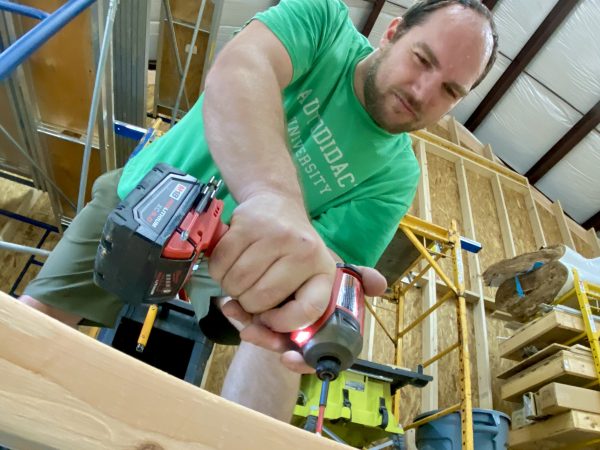
This time I decided to put some screws into the face-nailed rafter to help keep it tight through all the twisting that happens during the lifting process.
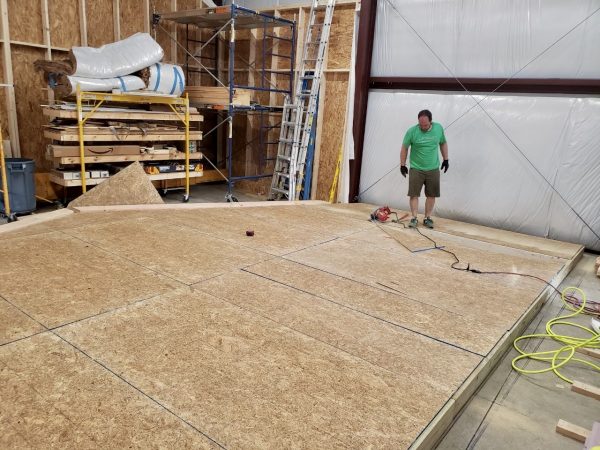
We then sheathed the wall and cut out the doorway.
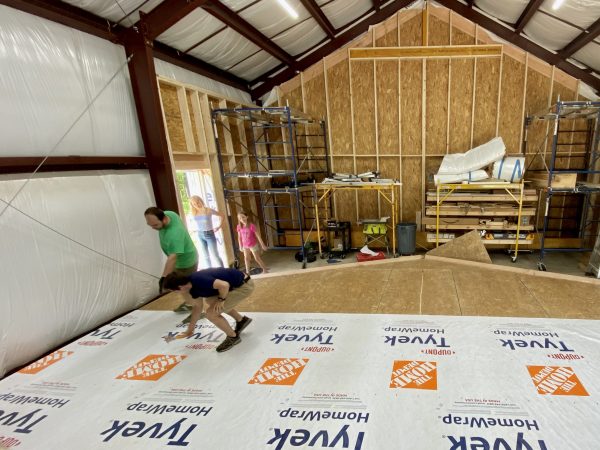
This is the only wall which vapor barrier could be applied after it was up, but it actually turns out to be much easier to install on the ground.
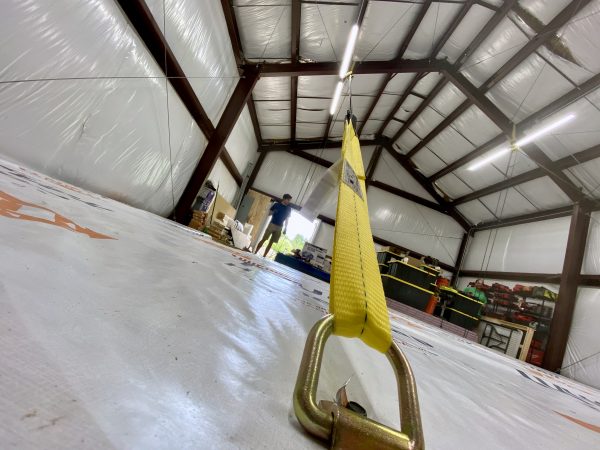
Peter anchored the D-rings while Ryan and I attached the hoists to the steel rafter.
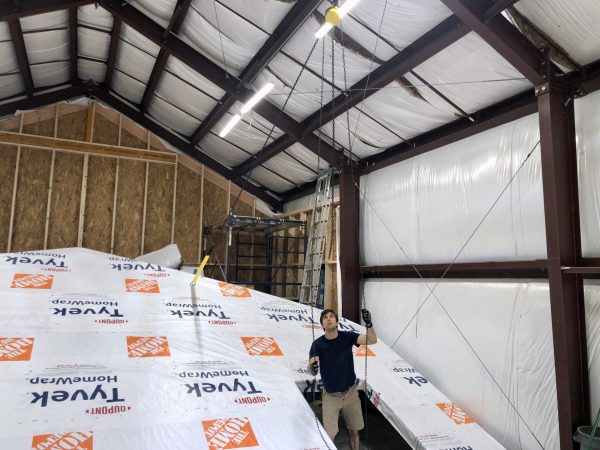
We started pulling and one of the hoists was binding up because of the angle we were pulling at.
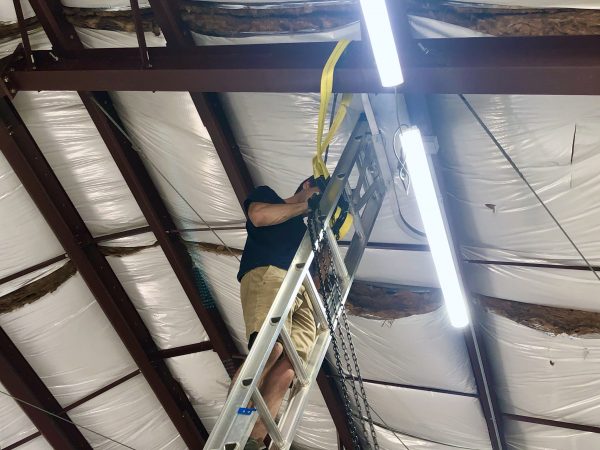
We tired rotating the hoist, since the other side wasn’t giving us any trouble. This did not help.
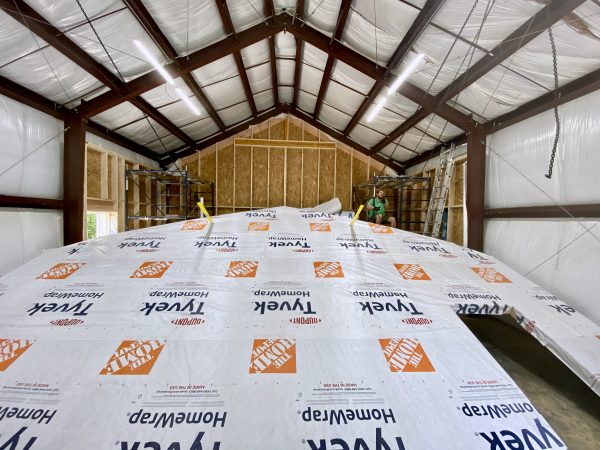
Finally we realized that pulling from a higher angle on the opposite side of the wall would work, so I sat on the scaffolding and pulled from there.
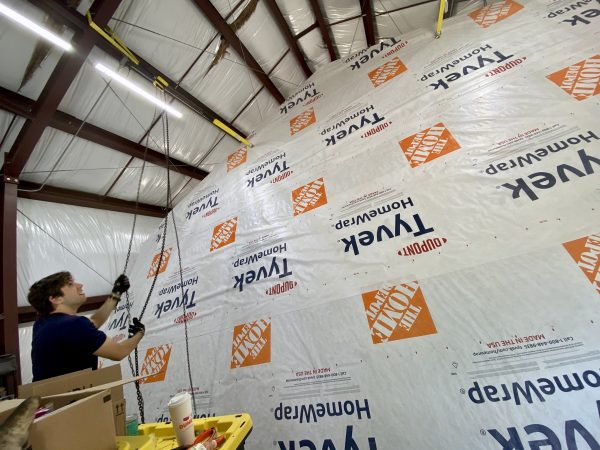
This got the wall almost all the way so it was pretty easy to push into place.
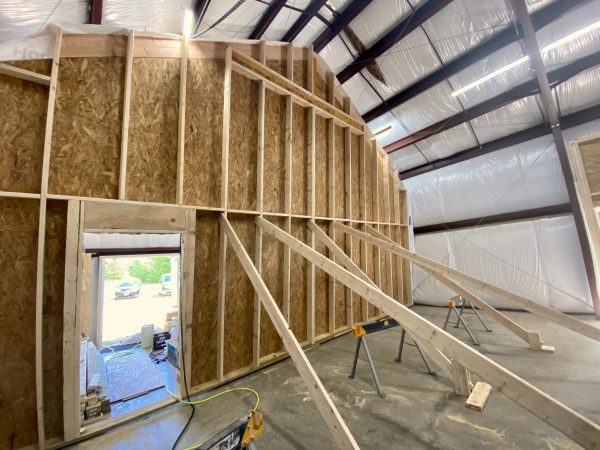
We were very careful about bracing and took safety measures on both sides.
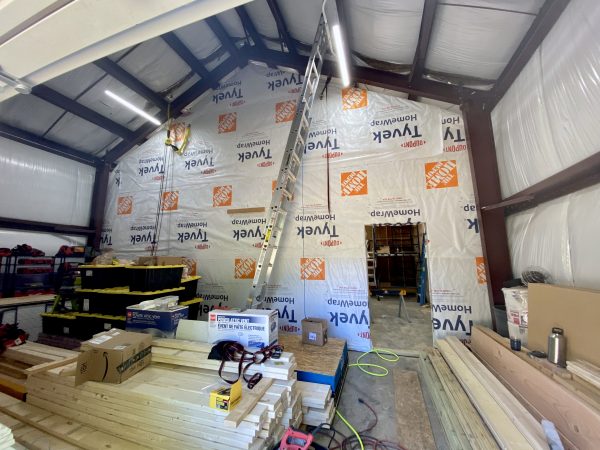
We replaced the chain hoists with some ratchet straps to keep the wall from swaying away from the rafter until the ridge beam is in place.
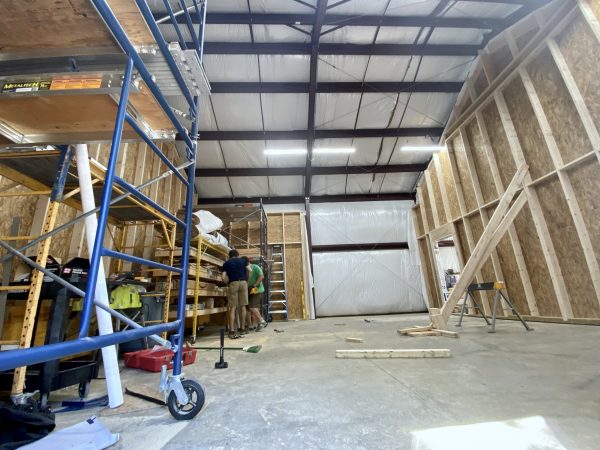
Finally simplified the bracing to make room for the side walls.
- Categories
- Construction

